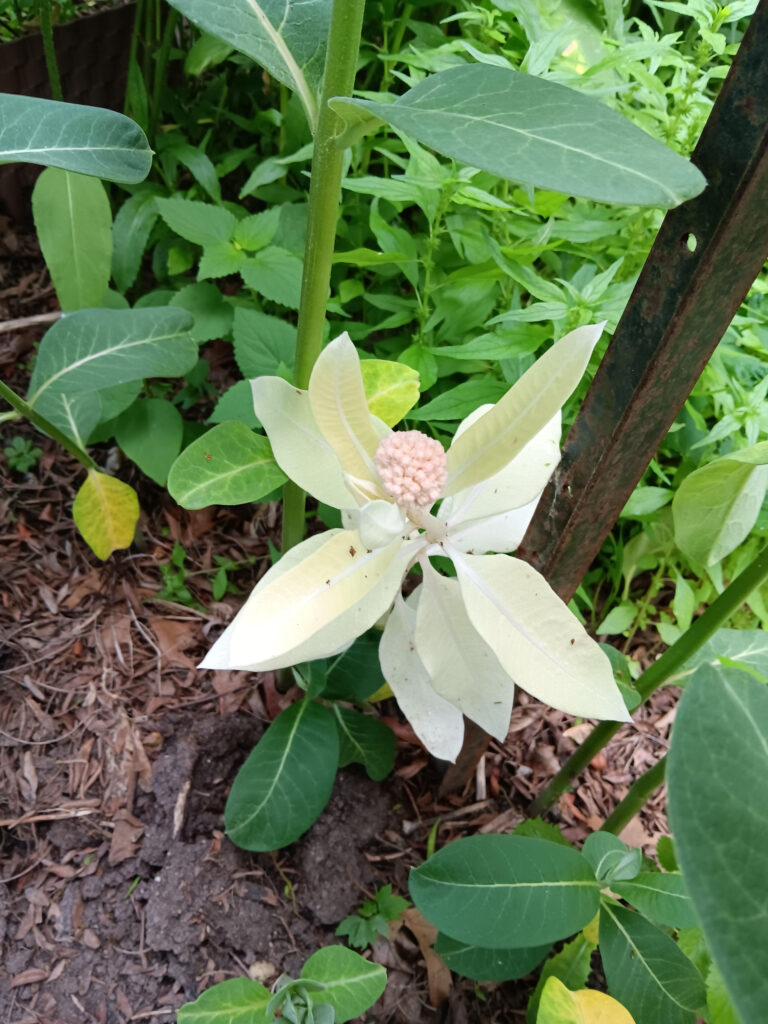Yesterday, while tending to the pollinator garden I coordinate in a nearby public park, I was surprised to see this common milkweed (Asclepias syriaca) exhibiting albinism.
Apparently albino milkweeds occur infrequently in nature, likely due to a genetic mutation. Because they lack chlorophyll, they are unable to photosynthesize and, reportedly, do not live as long or grow as large as ordinary milkweeds. However, milkweeds spread by rhizome, meaning that albino milkweeds may gain nutrients from fellow plants to whom they are connected.
Albinism in plants is never common, but reportedly occurs often enough in redwood trees and orchid plants to suggest it may confer some evolutionary advantage (perhaps especially in shade and understory environments), wherein non-chlorophyll-producing plants—known as mycoheterotrophs—forgo photosynthesis in favour of parasitizing mycorrhizal fungi. One wildflower native to Canada, Monotropa uniflora or ghost pipe, is fully mycoheterotrophic.
[Personally, I object to the term “parasite” to describe mycoheterotrophic plants. If the mycoheterotroph gains or borrows energy without harming the source plant or fungal organism, it seems to me it would more properly be described as a commensal.]
I cannot say whether the albino milkweed in my local park has ‘chosen’ a mycoheterotrophic strategy or is simply a mutant plant. It is noticeably smaller than its peers, but seems healthy so far and shows the beginnings of a blousy blossom head. I will monitor it through the season to see how it grows. I’m curious to see whether it will remain healthy and, equally, whether its blossoms will attract insects.
In the meantime, my mutant milkweed is a thing of beauty and a source of wonder, nestled in among her green sisters. I am grateful to her for existing, and for giving me the opportunity to learn something new about plant genetics and physiology.
